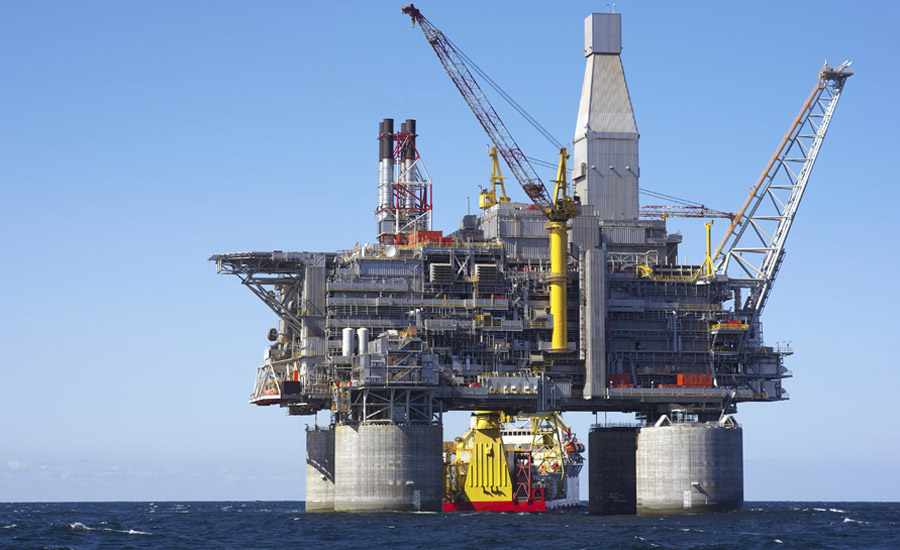Ten years later: Oil rig safety lessons learned from Hurricane Katrina

According to government data, Katrina destroyed 46 oil platforms and damaged 100 pipelines in August 2005. Massive waves sunk entire platforms and snapped seabed anchors. Hurricane Rita dealt a second blow less than a month later.
Federal regulators and the oil and gas industry state that no lives were lost or major spills reported offshore during Katrina despite the destruction. Environmental groups continue to challenge the spill claim, saying it airbrushes the impact of hundreds of smaller recorded spills.
Ten years later, regulators and industry say tougher design standards and better meteorological data have vastly improved hurricane safety offshore. Efforts to remove risky older, unused offshore structures are moving forward, though slowly.
Safety experts and environmental advocates are skeptical the industry is prepared for the next big storm. They say companies still have too much discretion in deciding when they shut down operations. Instead of drafting rules that push operators to prepare for worst-case storms, critics say regulators continue to be reactionary and heavily dependent on industry guidance.
Federal regulators estimate more than 3,000 of the 4,000 platforms in the Gulf in 2005 were in the direct paths of hurricanes Katrina and Rita, each of which halted production for weeks.
Together, the storms damaged 457 pipelines and destroyed more than 100 platforms. About 20 mobile drilling rigs experienced total failure, including nearly a dozen newer semi-submersible floating drilling units.
After Katrina and Rita, the American Petroleum Institute released hundreds of pages of new design standards, including raising the 100-year wave crest height to 91 feet. The group developed stronger guidelines for tying down derricks, compressors and other platform features affected by storm winds. Government regulations drew heavily upon these standards.
Despite new standards, storms continue to threaten offshore structures. In 2008, Hurricanes Ike and Gustav destroyed 60 oil and gas platforms. Hurricane Isaac in 2012, a slow-moving, rain-heavy Category 1 system, did little harm offshore, but flooding from the storm lifted and overturned large oil storage tanks inland.
Shortly after the BP oil spill, the Obama administration vowed to push operators to quickly plug abandoned wells and dismantle old platforms, known as the "Idle Iron" program.
The Associated Press reported in July the number of unused wells in the Gulf has actually increased since 2010, with nearly 14 percent of some 27,000 wells left with temporary seals for extended periods of time, sometimes more than a year. The Bureau of Safety and Environmental Enforcement told the AP the agency is making progress on its goal to permanently plug unused wells.
Environmental advocates say the risks during storms are huge. Many point to Taylor Energy's Mississippi Canyon 20-A platform, a newer structure that worked 550 feet above two dozen producing wells off the Louisiana coast until Hurricane Ivan destroyed it in 2004. The wreckage was removed, but oil continues to leak from the site to this day despite industry efforts to stop it.
Every day nearly 10,000 people wake up on a platform or a drilling rig in the Gulf of Mexico and go to work. The oil and gas industry says its priority is keeping those people and the places they work safe -- especially as more frequent and stronger storms become reality.
Shell evacuated more than 2,000 employees and contractors working offshore before Katrina and Rita. The company spent more than $300 million repairing Gulf infrastructure after the storms, including damage to its Mars platform where the storms toppled the latticework derrick and tore apart the rig floor. The underwater structure survived undamaged, and Mars returned to production in June 2006.
If offshore safety is an economic calculus, the sharp downturn in oil prices will affect how the industry prepares for the next hurricane. Oil prices fell to a six-year low this month, down from nearly $100 per barrel last summer to $42.23 during Aug. 13 trading.
A wide range of energy companies work in the Gulf of Mexico, from the small, independent oil company on the well-explored Outer Continental Shelf to the major integrated corporations exploring the ultra-deep waters. The entire industry is slashing spending and cutting jobs.
Source: http://www.nola.com
Greater New Orleans Times-Picayune
Looking for a reprint of this article?
From high-res PDFs to custom plaques, order your copy today!





